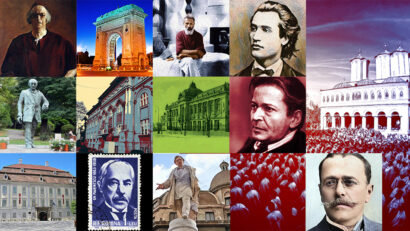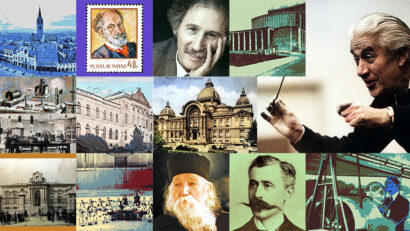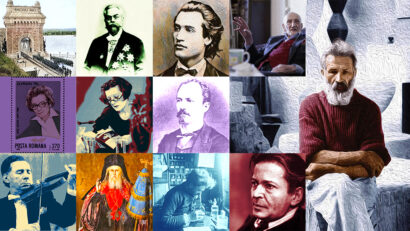The Bracelet of Princess Marie of Edinburgh
Queen Marie of Romania was born on October 29, 1875 in Kent, England.

Ion Puican, 18.10.2025, 14:24
Queen Marie of Romania came from a royal family with deep roots in European history. Her father, Alfred, Duke of Edinburgh, was the son of Queen Victoria of Great Britain, and her mother, Maria Alexandrovna, was the daughter of Tsar Alexander II of Russia. Marie spent her childhood in the elegant atmosphere of the Eastwell Park residence, a world of British tradition, education, and refinement.
At the end of 1892, at just 17 years old, she married the Crown Prince of Romania, Ferdinand I. It was the beginning of a new life and a bond that would change history. Over time, Maria identified herself deeply with the Romanian people. She became not only the queen of a country, but also one of its most beloved figures — a symbol of courage, beauty and devotion. Through her elegance, diplomacy and strength, Queen Maria managed to bring two worlds closer — Romania and Great Britain — and unite them through culture, faith and love for the country. But before she was queen, she was a dreamy child, who wore a jewel full of symbols on her hand, namely, the gold bracelet given to her by her parents, a reminder of a royal childhood.
Historian Diana Mandache with Romania’s National Museum of History tells us about Princess Marie of Edinburgh’s bracelet: “The bracelet of Princess Marie of Edinburgh is one of the most valuable pieces of heritage that belonged to Queen Marie of Romania. It was included in the collectionof the Romania’s National Museum of History in 1973. It was first a piece of private property, later confiscated by the communists (in 1948). So in 1973 it was included in the collection of Romania’s National Museum of History and was only put into light after the fall of communism, after the redevelopment of the “Historical Heritage” exhibition, in the 1990s. It was exhibited alongside other golden pieces or heritage pieces that belonged to Queen Marie, in the Treasury Room.”
The gold bracelet is manufactured in Victorian style, decorated with painted medallions. Diana Mandache: “The Victorian style of royal jewelry and in this case, of the jewelry of Princess Marie of Edinburgh, is obvious through the technique and the monograms used. In this case, they are the initials of the first names of the children of the Dukes of Edinburgh couple. And the fonts are specific to the Victorian style. Then, the medallions that contain biographical data, date of birth, as well as painted portraits of family members, in this case the children of Edinburgh, are specific to the Victorian era. ”
The bracelet is part of the jewelry collection of Queen Marie of Romania. Queen Marie was famous for her elegance and refinement. Her jewelry collection includes spectacular pieces, inherited, received as gift or specially commissioned, each carrying a story about her taste, personality and connections with the great royal houses of Europe. Historian Diana Mandache gives us more information about these royal jewels: “Queen Marie’s jewels had their own symbolism when they were commissioned by her as Princess of Edinburgh, as Crown Princess of Romania or as Queen of Romania. Otherwise, they reflected the style of the era, whether we are talking about the Victorian style, Art Nouveau or, later, Art Deco. This Victorian era jewel reflects the taste of the era, of Queen Victoria and the Duke and Duchess of Edinburgh. It is part of the later collection of Queen Marie of Romania. Her passion for jewelry was a form of expressing cultural identity. Many Art Nouveau jewelry, many Art Deco jewelry represent her in a particular way. The Victorian era is linked, within her jewelry collection, strictly to her childhood and the first part of her adolescence. From my point of view, Queen Marie was a supporter of art in Romania and beyond.”
Diana Mandache, told us about the childhood of Queen Marie of Romania, a childhood from which we have the collector’s item represented by the gold bracelet from the Museum’s treasury: “The jewelry of the Princess of Edinburgh’s childhood bore the genealogical imprint, reminiscent of her illustrious grandparents Queen Victoria of Great Britain or Tsar Alexander II of Russia. The ornaments of the children of the royal family were not simple jewelry. They usually represented dynastic symbols, except for those that depicted classical religious signs or floral motifs adopted by Queen Victoria during her childhood. Royal attributes such as the rose, that is, the rose of England, the oak, the power of the monarch and the lily of the valley, also reflect the purity of age. Gradually, as she entered adolescence, Maria’s jewelry would also express her new status as Crown Princess of Romania. I believe that this bracelet of Queen Marie contributes to understanding the complex personality, but also the era in which Queen Marie of Romania lived during her childhood in Britain.”
Today, Princess Marie’s bracelet is no longer just a piece of jewelry. It remains a rare testament to the Victorian elegance and family ties that shaped the personality of one of Romania’s most beloved queens. (EE)






























